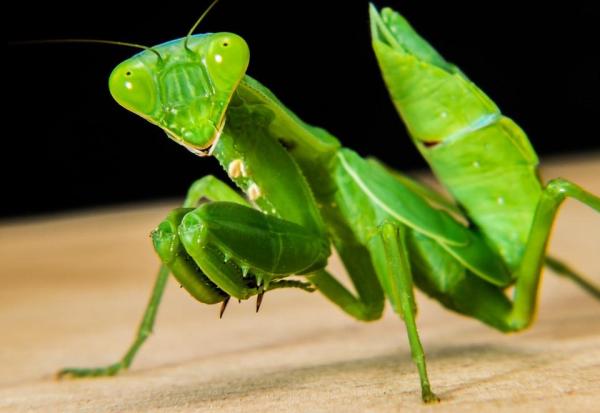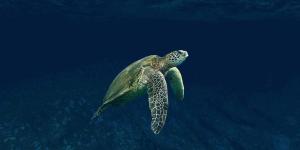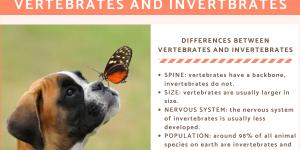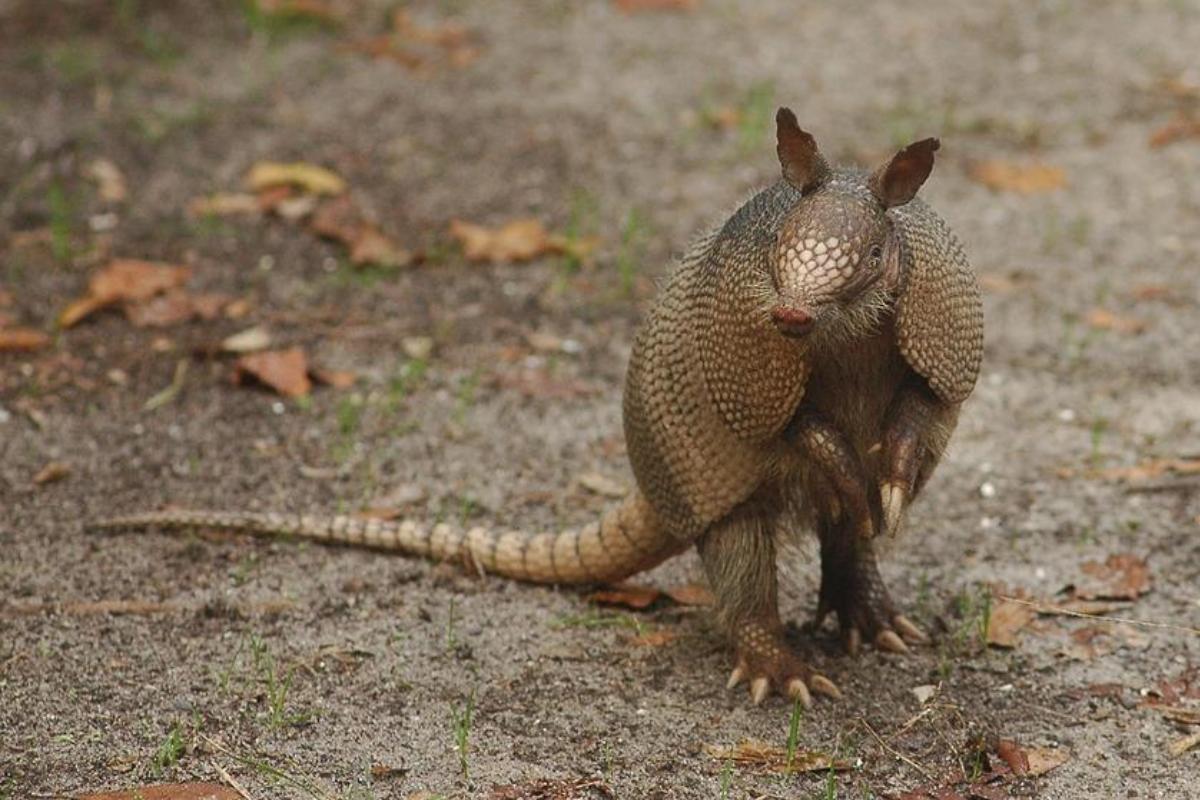Animals That Have an Exoskeleton Examples


Exoskeletons and endoskeletons carry out some of the same basic functions, especially when it comes to protection, movement and structural support. Despite this, an animal will have an exoskeleton for specific reasons, something we can see in the types of animals with exoskeletons. These animals tend to be smaller and less complex animals as all animals with exoskeletons are invertebrates. There are a very few invertebrate species with endoskeletons, but these tend to be quite rudimentary. No vertebrate has an exoskeleton.
AnimalWised looks at this list of animals that have an exoskeleton, providing examples of creatures with their skeletons on the outside of their body. We also bring you some fascinating facts about these animals to help us better understand why they have exoskeletons in the first place.
What is an exoskeleton?
The exoskeleton is an external structure which covers the body of various animals, although only it is only present in types of invertebrate. It is a rigid structure, resistant to trauma and damage from outside forces.
There are different stages of exoskeleton development, but there is a key difference between exoskeletons and endoskeletons. Endoskeletons develop at the embryonic stage and remain with the animal for life, growing as the animal matures. Exoskeletons also develop at the embryonic stage, but they cannot grow. Once they develop, they remain the same size, meaning the animal needs to molt the old exoskeleton and grow a new one to fit their current stage.
Another variable aspect of exoskeletons is the material from which they are made. The structure is created from various materials depending on the subphylum (the taxonomic category) to which the animal belongs. For example, for insects and crabs the exoskeleton will be made from chitin, a polymer also used to create squid beaks and fish scales[1]. The exoskeleton (shell) of mollusks is predominately made of calcium and diatom exoskeletons are made from silica[2].
Exoskeletons can take many forms, but there are some general parts which create their structure. These include:
- Cuticle: this is the non-cellular layer secreted by the hypodermis. Arthropods are able to shed this layer to facilitate growth.
- Hypodermis: the cellular structure that generates the cuticle and creates the necessary conditions for its molting.
- Basal membrane: innermost non-cellular layer of the exoskeleton, is responsible for supporting the muscles.
What is the function of an exoskeleton?
Just like an endoskeleton, an exoskeleton has various purposes. These include:
- Protection and support: exoskeletons give the animal form so they can carry out their daily activities. They support appendages such as legs so that the animal can move from one place to another. They also protect vulnerable internal organs, muscles and other tissue.
- Senses: the exoskeleton can help the organism to be aware of external agents, such as moisture and dryness.
- Storage: they can store certain substances and nutrients which can be used for various purposes. These substances often create colors which can be used for predation or defense.
- Feeding: the exoskeleton allows the animal to use its structures for feeding, as well as excreting.
In a minority of species, it is possible to have an endoskeleton as well as form of exoskeleton. However, there is some debate over true exoskeletons which we will explain later. To learn about the stages of exoskeleton development, check out our article on how crustaceans grow.
Arthropods with exoskeletons
The phylum of arthropods contains the largest number of species in the world. All of them have exoskeletons, but the examples of exoskeletal animals in this phylum are incredibly vast and varied. To better understand such a large group of animals, we can break down the classification of different arthropods:
Chelicerata
One of the major subdivisions of arthropods, they have segmented bodies with jointed limbs attached. Their exoskeleton is made of chitin and proteins. They can be either terrestrial or aquatic. Included under this umbrella are:
- Arachnids: includes spiders, ticks, mites, scorpions and others (many of which are extinct). In total, it includes more than 30,000 different species.
- Pycnogonida: includes 50 species of sea spiders, which often inhabit the body of other animals as a type of parasite.
Mandibulata
This is a subphylum of arthropods which are classified by the fact they have modified limbs used in feeding known as mandibles. They also have well-formed antennae and legs. They cover the following classes:
- Insects: they have a well-defined head, thorax and abdomen. They live in both terrestrial or underwater environments, many of which have wings. There is great diversity among insect species with carious characteristics and particularities. Find out about the different types of aquatic insects to learn more.
- Crustaceans: have a rigid exoskeleton due to calcareous substances. They live in fresh or salt water and include a great variety of species with multiple appearances, from lobsters and crabs to woodlice.
- Myriapods: they develop an elongated body that makes them similar to worms, but with a differentiated head and the addition of legs.
In turn, the subclass of Myriapoda is divided into:
- Diplopoda: this class includes millipedes. They have jaws, an elongated body and many legs.
- Chilopoda: similar to the diplopods, this is the class which contains centipedes. They have a more elongated body than millipedes.
- Symphyla: elongated species similar to the chilopoda, but smaller and with antennae.
- Pauropoda: these are terrestrial worms that like to live in the soil. They have antennae and tracheal breathing.
The photo below depicts a praying mantis, an arthropod with an exoskeleton. They also have very strong mandibles which they use to break down the exoskeleton of other animals, including when the female mantis eats their own mate.

Examples of animals that have an exoskeleton
Now that you know more about exoskeletons as external structures, we can look more closely at exoskeleton animals:
1. Mites
From subclass Acari, they are parasitic arachnids that survive by living off of other animals. There are both terrestrial and aquatic species. Their diet is varied and can be hematophagous (meaning they live off of blood), detritivorous (sustain themselves on body parts, skin flakes and other detritus from the host) and herbivorous (plant matter). The different species are capable of transmitting diseases.
2. Crabs
There are many types of crab species, but true crabs are crustaceans with five pairs of legs. They have a body with a strong shell and claws which allow them to defend themselves as well as catch their prey. Not many can swim, so they mainly live on the sea bed, although there are also types of land crabs. The crab in the photo below is a marine crab. Discover more about the anatomy of crabs with our related guide.
3. Bees
Bees are insects that are widely distributed on planet Earth. They are organized into colonies with well-defined hierarchies and are very important in the process of pollination for thousands of plant species. Without them, we humans will likely die.
4. Centipede
Animals of the class Chilopoda, there are more than 3,000 species of centipede arthropod characterized by an elongated body divided into segments, multiple legs, antennae and powerful jaws. They are predators and hunt insects, worms and snails.
5. Sea spiders
Despite not being directly related, they have eight legs that they use to move, which is why they are compared to terrestrial spiders. They easily mimic the seabed for camouflage and have a body of thin and long limbs. You can learn about the different types of sea spider with our related article.

What is an endoskeleton?
The endoskeleton is an internal structure which protects the organs, allows the muscles to be strengthened, provides shape to the body of the animal, allows movement and protects the nervous system. All vertebrates have an endoskeleton, so the most common animals have these structures.
A difference between the exoskeleton and the endoskeleton is that the latter grows with the individual to which it belongs. It is not necessary to discard the skeleton to perform this function. In addition, it develops from the moment at which the organism is an embryo (fertilization). Endoskeletons are characterized by a vertebrae (or spine) made up of discs, which protect the nervous system and connect with the skull and brain in most species.
Exoskeletons do not grow along with the animal. For this reason, they will need to be shed. When the animal needs to grow or even metamorphose into a different form (e.g. caterpillar to butterfly), they will shed the exoskeleton and emerge anew. The new exoskeleton will usually be much softer after initial development and will take some time to harden.
Having an endoskeleton is a defining feature of vertebrates, their name referring to the presence of a spine, an important part of endoskeletons. Learn more about the differences between vertebrates and invertebrates with our related article.
Examples of animals that have an endoskeleton
There are thousands of species that have this structure that allows them to protect their organs and strengthen the shape of their body. Here are just some of the types of animals with an endoskeleton:
1. Cephalopods
Mollusks of the class Cephalopoda which include octopus and squid, among others. Cephalopods have inhabited the seas since the Carboniferous period 298.9 million years ago. They are characterized by their tentacles and a flexible body with a gelatinous texture. They eat other animals, making them types of carnivore.
2. Fish
Most fish have an endoskeleton that protects their internal organs and provides muscles with the ideal support for swimming. For this reason, the fish endoskeleton includes the fins and tail in many specimens. One exception is the hagfish which is technically a vertebrate. However, despite possessing a skull, they do not have vertebrae, but instead a notocord (flexible rod similar to cartilage).
3. Vertebrates
All vertebrates, whether marine, terrestrial, flying or freshwater, have an endoskeleton that protects their organs, contains the nervous system and provides support to the musculature. Among vertebrates we find the following animals:
- Amphibians
- Reptiles
- Birds
- Mammals
- Cartilaginous fish
- Finned fish
The human being is also included in this classification.
Tunicates are an invertebrate animal which many people claim have an endoskeleton. They have a notocord in their larval form. However, they are not vertebrates. They have a characteristic outer structure which acts like an exoskeleton.
Discover whether all fish have scales in our related guide.

Examples of animals that have both an exoskeleton and endoskeleton
As we stated earlier, there are some animal species which are thought to have both exoskeletons and endoskeletons. However, this is a difficult group to define. In actuality, they have an endoskeleton which exhibits unique characteristics which act as an exoskeleton. These animals include:
1. Armadillos
Armadillos are terrestrial mammals, making them vertebrates that have an endoskeleton inside their body. These animals are also characterized by having an outer shell formed of bony plates, which serves as a means of protection. This shell actually has living tissue on the outside and is not considered a true exoskeleton. We can see these keratinized scales clearly in the photo below.
2. Pangolins
Pangolins are mammals that are distributed in Asia and Africa, where they feed on ants and termites. As for its appearance, they are similar to armadillos. In addition to being a vertebrate, they have an external armor formed by rigid plates. These plates are made of keratinized scales and are not a true exoskeleton, despite being very hard and being used for protection. Human and animal hair is also made from keratin, yet is not actually part of the skeleton.
3. Turtles
Marine and freshwater turtles have a sort of exoskeleton that is very recognizable known as a carapace. The shell protects the organs and other vulnerable tissues. at the same time, it represents a kind of house for the turtle, where it can take refuge to rest or avoid predators. It is not, however, an actual exoskeleton, instead being attached to the endoskeleton.
Learn more about types of animals with scales which are often used as a form of protection, similar to the presence of an exoskeleton.

If you want to read similar articles to Animals That Have an Exoskeleton Examples, we recommend you visit our Facts about the animal kingdom category.
1. Huang, W. C., Zhao, D., Xue, C., & Mao, X. (2022). An efficient method for chitin production from crab shells by a natural deep eutectic solvent. Marine life science & technology, 4(3), 384–388. https://doi.org/10.1007/s42995-022-00129-y
2. Sethi, D., Butler, T. O., Shuhaili, F., & Vaidyanathan, S. (2020). Diatoms for Carbon Sequestration and Bio-Based Manufacturing. Biology, 9(8), 217.
https://doi.org/10.3390/biology9080217
- From Cruz Lozano, J. (2005). Entomology: morphology and physiology of insects. Palmira, National University of Colombia.
- Cruz Angón, A. (ed.). (2011). The biodiversity of Veracruz. State study. Mexico, Conabio.









